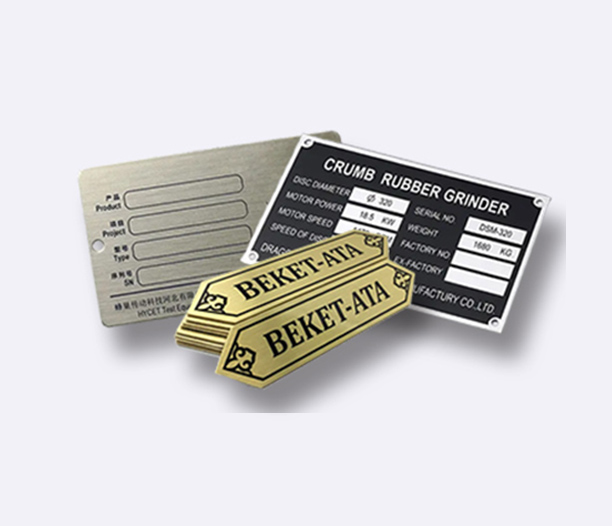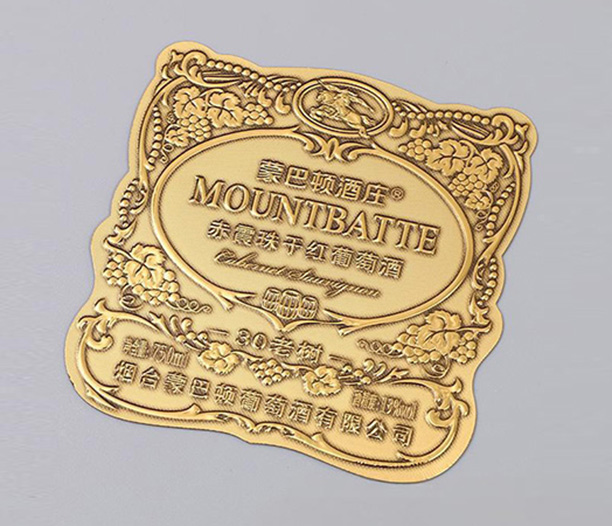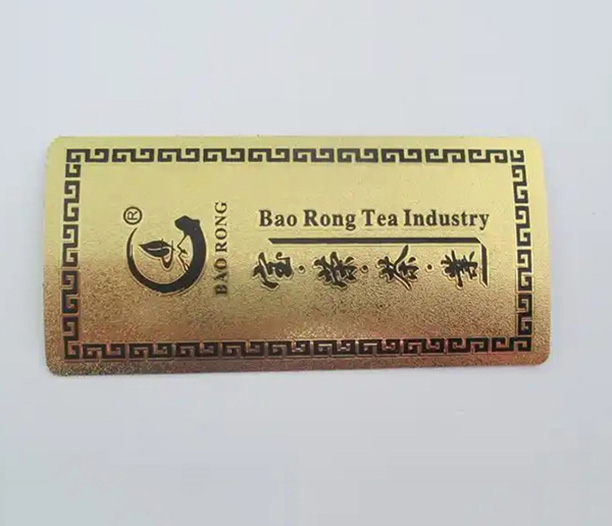In the world of business and branding, every detail matters. From the quality of your products to the demeanor of your staff, each element contributes to the overall perception of your company. One often underestimated yet incredibly powerful detail is the humble name plate. But not just any name plate—a custom name plate with logo. This isn't merely a piece of metal or plastic with a name on it; it's a statement of professionalism, quality, and identity. Whether it's for an office door, a piece of machinery, a retail display, or an award, a professionally crafted name plate elevates your presence.
This guide will walk you through the seven essential aspects of creating the perfect custom name plate with logo, ensuring your investment makes a lasting impact.
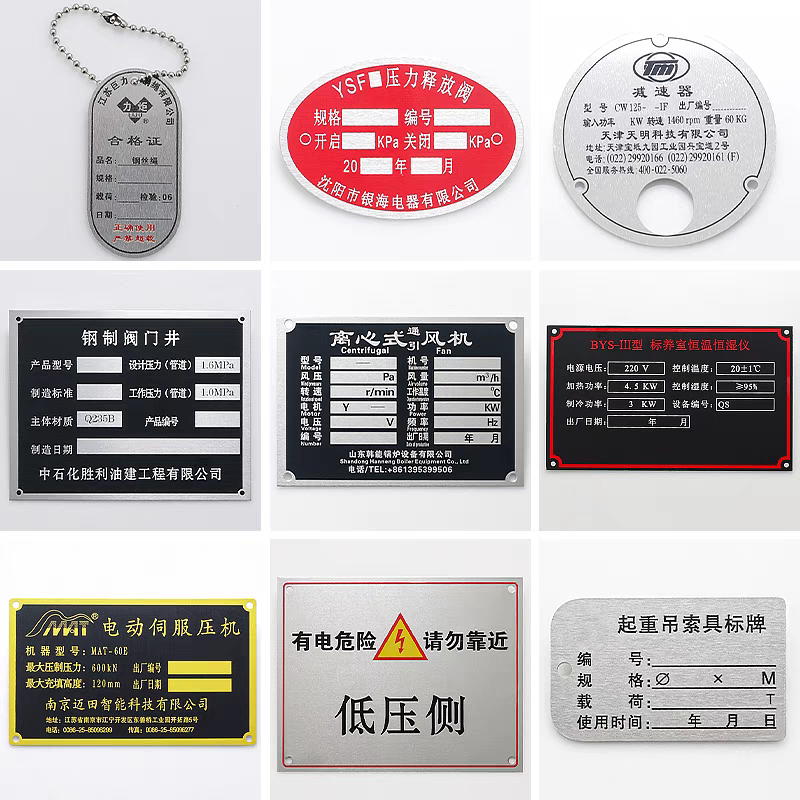
Understanding the Power and Purpose of a Custom Name Plate with Logo
A custom name plate with logo serves a multitude of purposes, far beyond simple identification. It is a multifaceted tool that functions on several levels.
First and foremost, it is a critical component of brand reinforcement. Your logo is the visual cornerstone of your brand identity. By placing it on a permanent, high-quality fixture like a name plate, you create a consistent and professional brand experience for anyone who interacts with your space. Every time a client, partner, or employee sees that polished custom name plate with logo on an office door or a reception desk, it subconsciously reinforces your company's commitment to quality and attention to detail.
Secondly, it provides essential information and wayfinding. In an office environment, these plates help people navigate seamlessly, directing them to the right person or department. On products or equipment, they serve as data plates, displaying model numbers, serial numbers, or safety certifications. This practical function is seamlessly blended with branding, making the information not just useful but also aesthetically pleasing.
Finally, it conveys authority and permanence. A flimsy, printed paper sign taped to a door suggests temporariness and a lack of care. A solid, well-engraved custom name plate with logo signals that the person or the business behind it is established, credible, and here to stay.
Exploring Material Options for Your Custom Name Plate
The material you choose for your custom name plate with logo is perhaps the most significant decision, as it dictates the plate's appearance, durability, cost, and overall feel. Each material offers a unique aesthetic and functional profile.
Metal: The classic choice, synonymous with quality and durability. Options include:
Brass: Offers a traditional, luxurious, and prestigious look, often used in law firms, universities, and executive suites. It can be polished to a bright shine or antiqued for a vintage feel.
Stainless Steel: Provides a modern, sleek, and industrial aesthetic. It is highly resistant to corrosion, rust, and tarnishing, making it ideal for harsh environments like laboratories, factories, or outdoor use.
Aluminum: A lightweight, versatile, and cost-effective metal. It can be anodized in various colors, making it perfect for incorporating brand colors into the plate itself. It's durable and suitable for both indoor and outdoor applications.
Bronze: Similar to brass, it conveys a sense of history and gravitas, often used for memorials, historical markers, and high-end architectural applications.
Plastic/Acrylic: A highly versatile and affordable option. Modern plastics like acrylic can be fabricated to look incredibly sophisticated. They can be transparent, opaque, or fluorescent and are available in a vast spectrum of colors. They are lightweight and perfect for indoor use where a modern or colorful aesthetic is desired.
Engraved Wood: Creates a warm, rustic, or traditional feel. It's an excellent choice for companies that want to project an organic, artisanal, or eco-friendly image. The engraving can be filled with paint to ensure the text and logo stand out clearly.
The Manufacturing Process: How Your Custom Name Plate is Made
The method used to create your custom name plate with logo depends on the chosen material and the desired effect. Understanding these processes can help you make an informed design choice.
Photo Anodization (for Aluminum): This is a high-end process where your logo and text are digitally printed onto the anodized aluminum surface using a photosensitive dye. The result is an incredibly detailed, full-color reproduction that is embedded into the material itself, making it extremely durable and scratch-resistant. This is ideal for complex, multi-colored logos.
Etching/Engraving: A subtractive process where a laser or rotary tool removes material to create the design. Laser engraving offers unparalleled precision, allowing for intricate details and even reproducing photographs as grayscale images. It works on metal, plastic, and wood. The engraved areas can be left as-is or filled with enamel paint for better contrast.
Screen Printing: A traditional method where ink is pushed through a fine mesh screen onto the surface of the plate. It's excellent for simple, bold designs and solid colors on materials like plastic, metal, and glass. While cost-effective for larger runs, it may not capture the finest details of a complex logo.
Embossing/Debossing: These processes create a raised (embossed) or recessed (debossed) design on a malleable material like metal or thick plastic. This creates a sophisticated tactile experience and a striking play of light and shadow, adding a three-dimensional quality to your custom name plate with logo.
Key Design Considerations for Maximum Impact
A well-designed custom name plate with logo is a balance of form and function. Here are the key elements to consider:
Legibility: This is non-negotiable. The primary purpose is to be read. Choose a clear, professional font. Avoid overly decorative scripts for the main name or title. Ensure there is a strong contrast between the text and the background (e.g., black on silver, white on dark blue).
Hierarchy: What is the most important piece of information? Typically, it's the person's name or the department. This should be the largest text element. The job title or room number should be smaller. Your logo should be sized appropriately to be clear and recognizable without overpowering the text.
Logo Integration: Your logo should be placed strategically. The most common positions are centered at the top or aligned to the left or right of the text. Ensure the logo is provided in a high-resolution vector format (like .AI or .EPS) to prevent pixelation or blurriness during manufacturing.
Size and Proportion: The plate must fit its intended space. A door name plate has different size constraints than a desk plate or a small name badge for a product. Consider the viewing distance—a plate meant to be read from afar will need to be larger.
Color Scheme: Stick to your brand's color palette to maintain consistency. Most processes allow for color matching. Remember that more colors can sometimes increase cost, so a minimalist, well-executed design can be just as powerful.
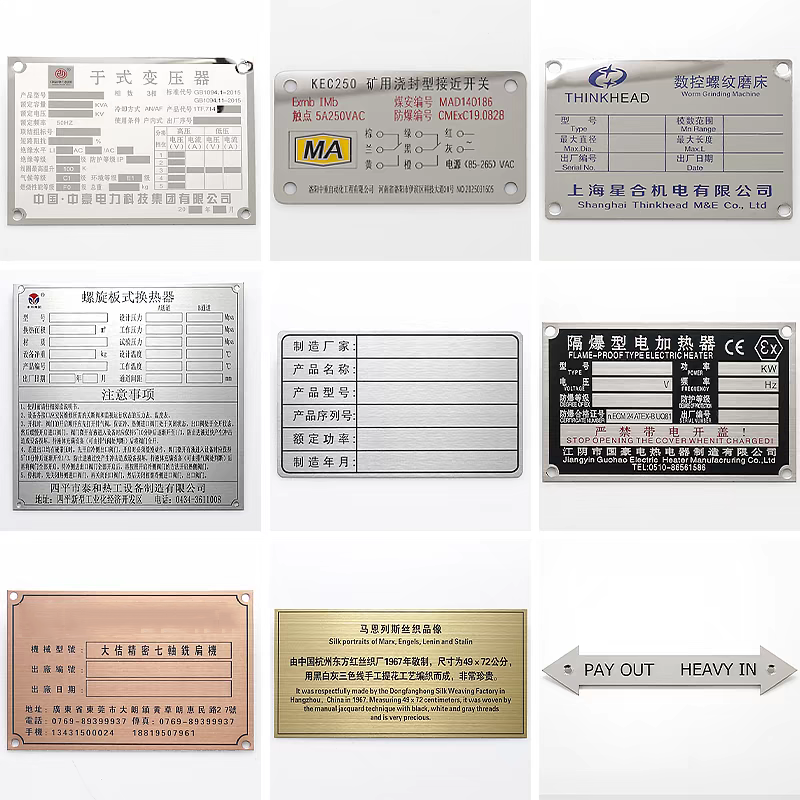
Creative Applications Beyond the Office Door
While naming offices is the most common use, the potential for a custom name plate with logo is nearly limitless.
Product Branding: Affix a sleek metal plate to your products to display your brand name, logo, and model number. This elevates the product's perceived value and provides essential information.
Awards and Recognition: Trophies and award plaques are fundamentally a type of custom name plate with logo. They serve as a permanent record of achievement, beautifully branded with your organization's identity.
Retail and Signage: Use them for elegant department signs in stores, price displays for high-end items, or directional signage within a showroom.
Machinery and Equipment: Durable metal data plates are essential for industrial settings, displaying safety information, serial numbers, and compliance certifications, all while keeping the company logo visible.
Architectural Elements: Incorporate name plates into building directories, memorial donor walls, or room number signs, blending seamlessly with the architecture.
Finding the Right Manufacturer for Your Project
Choosing a reputable supplier is crucial to transforming your design into a high-quality physical product. Look for a manufacturer that offers:
A Range of Options: They should offer multiple materials, processes, and finishes.
Design Tools and Support: Many providers have online design tools to visualize your plate. Access to a customer service representative or a design team is a huge plus.
Clear Samples: A good company will offer to send you physical samples of their materials and workmanship before you place a large order.
Positive Reviews and a Strong Portfolio: Look at their past work and read customer testimonials to gauge their reliability and quality.
Clear Pricing and Timelines: The cost of a custom name plate with logo can vary widely based on material, size, and quantity. Ensure the pricing is transparent and you understand the production and shipping lead times.
It's true that a custom name plate with logo will cost more than a generic, off-the-shelf solution or a printed label. However, it's critical to view this not as an expense, but as a long-term investment in your brand's image.
A cheap sign needs to be replaced frequently, looks unprofessional, and fails to communicate your brand's quality. A well-made custom name plate with logo will last for years, if not decades. Its daily impact on clients, partners, and employees—reinforcing a message of stability, quality, and pride—delivers a return on investment that far outweighs its initial cost. It is a small but powerful detail that speaks volumes about who you are as a business.
By carefully considering these seven aspects, you are well on your way to commissioning a custom name plate with logo that perfectly represents your brand and stands the test of time.



